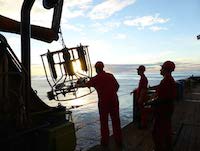Current Expeditions
IODP concluded in 2024 after eleven successful years of enabling the study of the subseafloor. Please visit the Expedition Schedule to learn more about IODP's past expeditions, and the Planning Updates page for information about subsequent scientific ocean drilling programs. Cores and samples may still be requested from the IODP Core Repositories.



